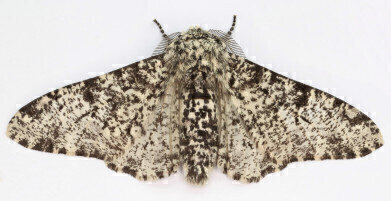Water/Wastewater
What Is Industrial Melanism?
Sep 04 2017
The phenomenon of industrial melanism refers to animals which have taken on a darker hue to their skin, fur or feathers due to their proximity to industrial pollution over a number of generations. In theory, the darker members of the species will become more effectively camouflaged from predators in their soot-coated surroundings, meaning that over a sustained period of time, they will prevail.
The phenomenon has been held up by evolutionists as clear and irrefutable proof of Darwin’s theory of evolution unfolding right before our eyes, although creationists have done their best to turn the argument on its head in recent years.
On the land
Until now, the archetypal example of industrial melanism in the wild is the peppered moth. In the aftermath of Britain’s Industrial Revolution, a startling upsurge in the number of dark-coloured moths was noted in and around industrial sites.
This was attributed to the darker moths being more difficult for their predators to spot, resulting in their lighter-coloured counterparts dying out. Indeed, the idea was thought to be so illustrative of the survival of the fittest that it’s often taught to schoolchildren to allow them to grasp the concept.
“It is the most simple to understand, visually attractive story of evolution in action,” explains Michael Majerus, a Cambridge geneticist.
In the sea
Recently, scientists from the University of Sydney in Australia have pointed to the turtle-headed sea snake as the first evidence of “industrial melanism” that has ever been encountered in a marine-dwelling animal.
Generally, the snakes have a black-and-white banded appearance, but a team of researchers led by Rick Shine have come across specimens living in polluted waters that are completely black. This, they claim, is a direct result of the contaminants in the waters around them and evidence of animals evolving to adapt to their climate.
It’s long been suspected that climate change could cause loss of plants and animals, but this latest discovery shows that there is hope the animal kingdom might be able to withstand our polluting ways. However, that doesn’t mean we shouldn’t work to curb our carbon footprint and rein in our contamination regardless.
“Limits to resilience”
The study looked at 17 different swampy areas around Australia and found that concentrations of heavy metals such as zinc, manganese, cobalt, lead and nickel were higher in urban regions. They also found that snakes in these regions tended to have darker skin. This implies that they are adapting to their environment, but it’s unclear whether it has actually improved their survival and breeding rates.
“Our research suggests that the snakes are rapidly evolving to help them deal with these new challenges, but there are limits to that resilience,” Shine explained. “We need to stop treating the ocean as a toilet.”
With a big market for chemicals to capture mercury already in existence, it seems that there is a growing need to reduce alarming levels of these other contaminants in our soil, air and water, as well.
Events
Apr 18 2024 Shanghai, China
Apr 22 2024 Hannover, Germany
Apr 23 2024 Kuala Lumpur, Malaysia
Apr 24 2024 Sao Paulo, Brasil
May 05 2024 Seville, Spain













